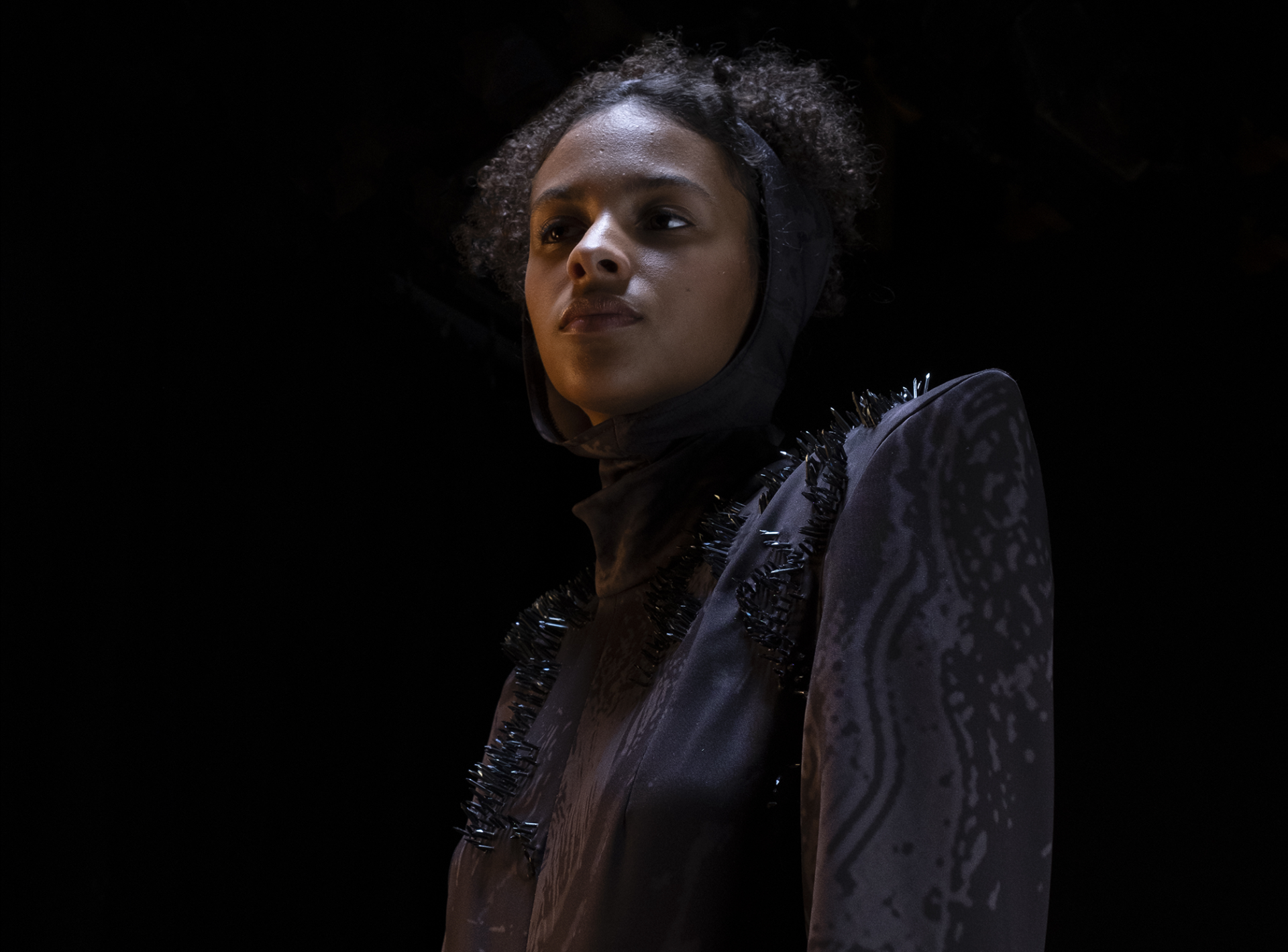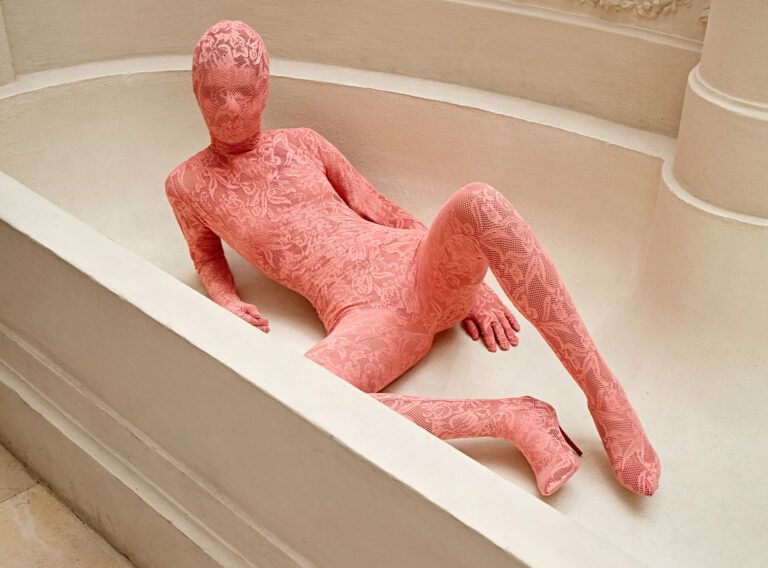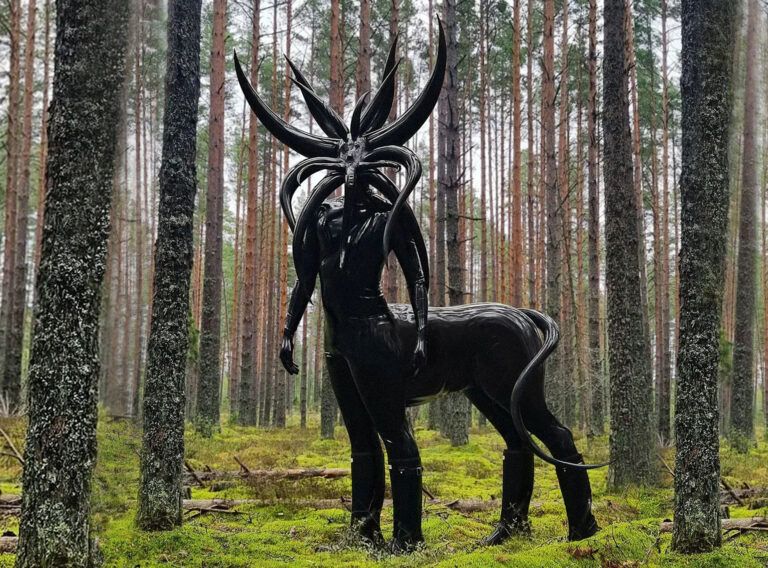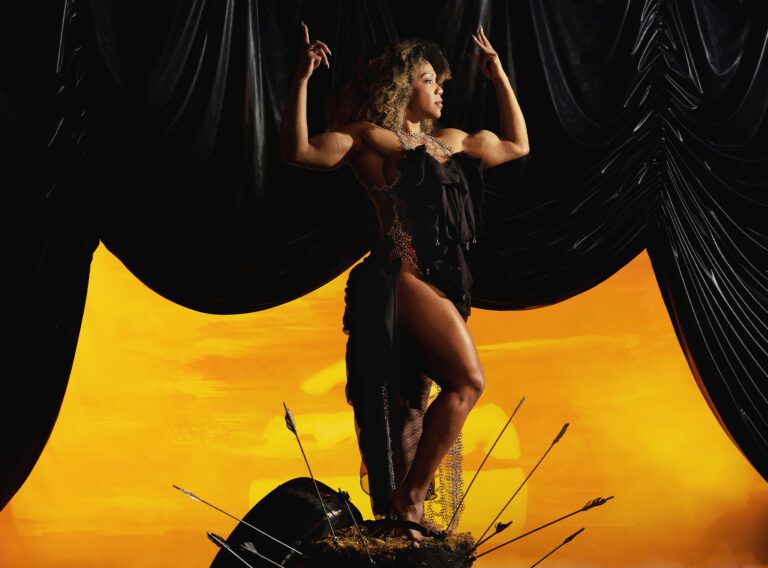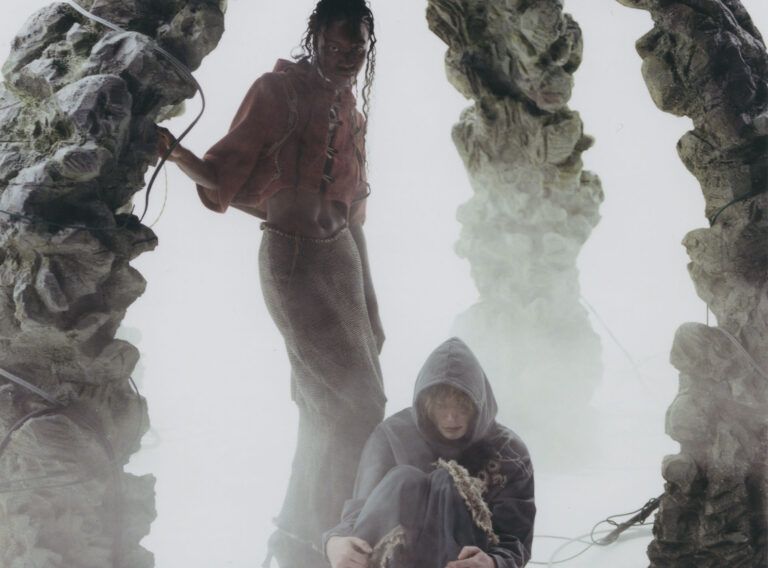WORDS BY THE AUTHOR / By combining my knowledge of textile design with my knowledge of sewing, draping and pattern construction, I create garments with heavy influences of handicraft. I would describe my process as an emotional storytelling, meaning that I design for myself by myself and I am my own worst critic. I question everything, the how, where, when and why and from there I build my creative world. I find it important for me to create these storylines not only to have as a guidance and base in my different projects but also to bring in the elements of fun and excitement throughout the whole process. Trying to work as instinctively and intuitively as I can, I strive to uncover and represent the emotions, history and memories that are embedded within colours and materials. The more you can play around, the better the story
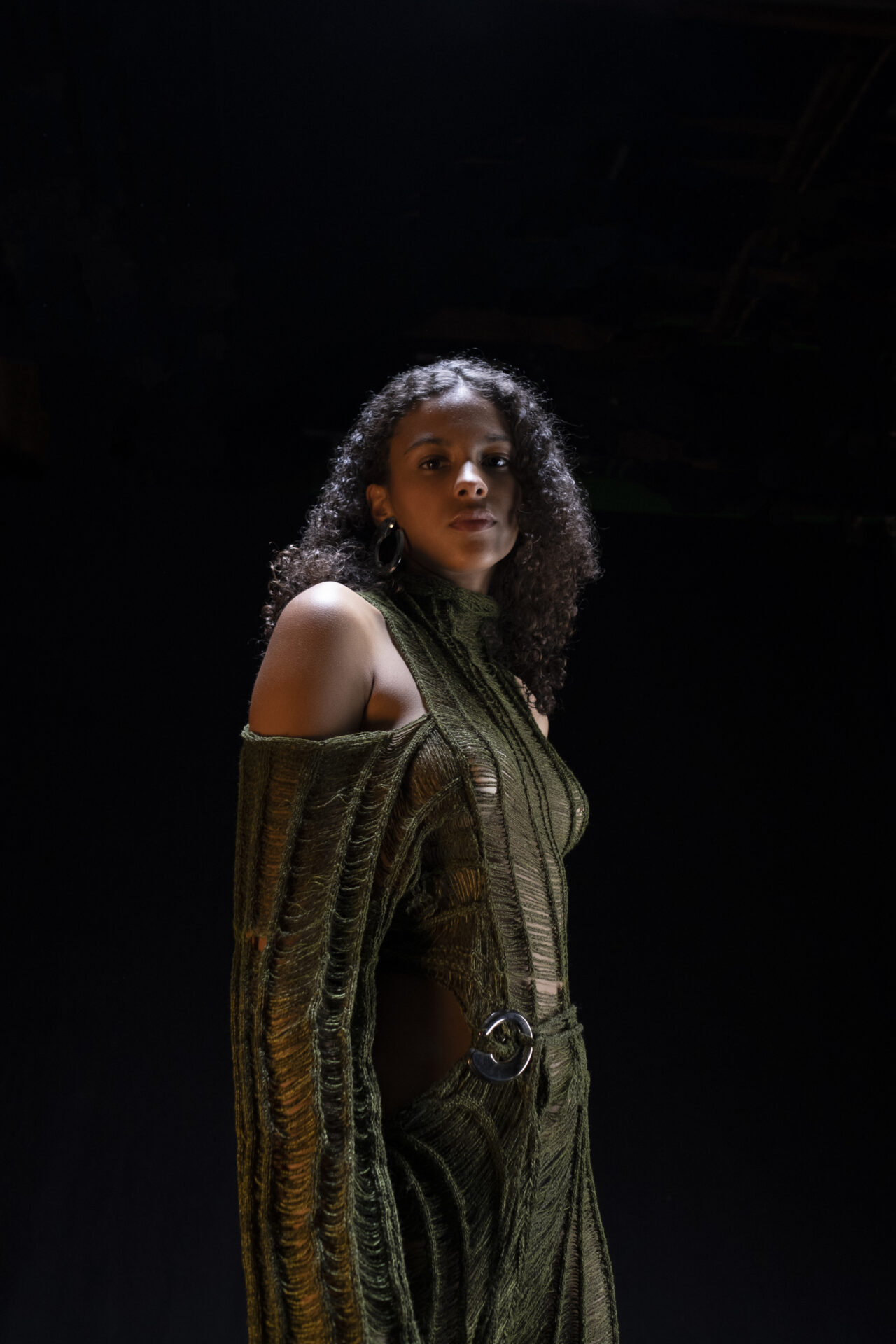
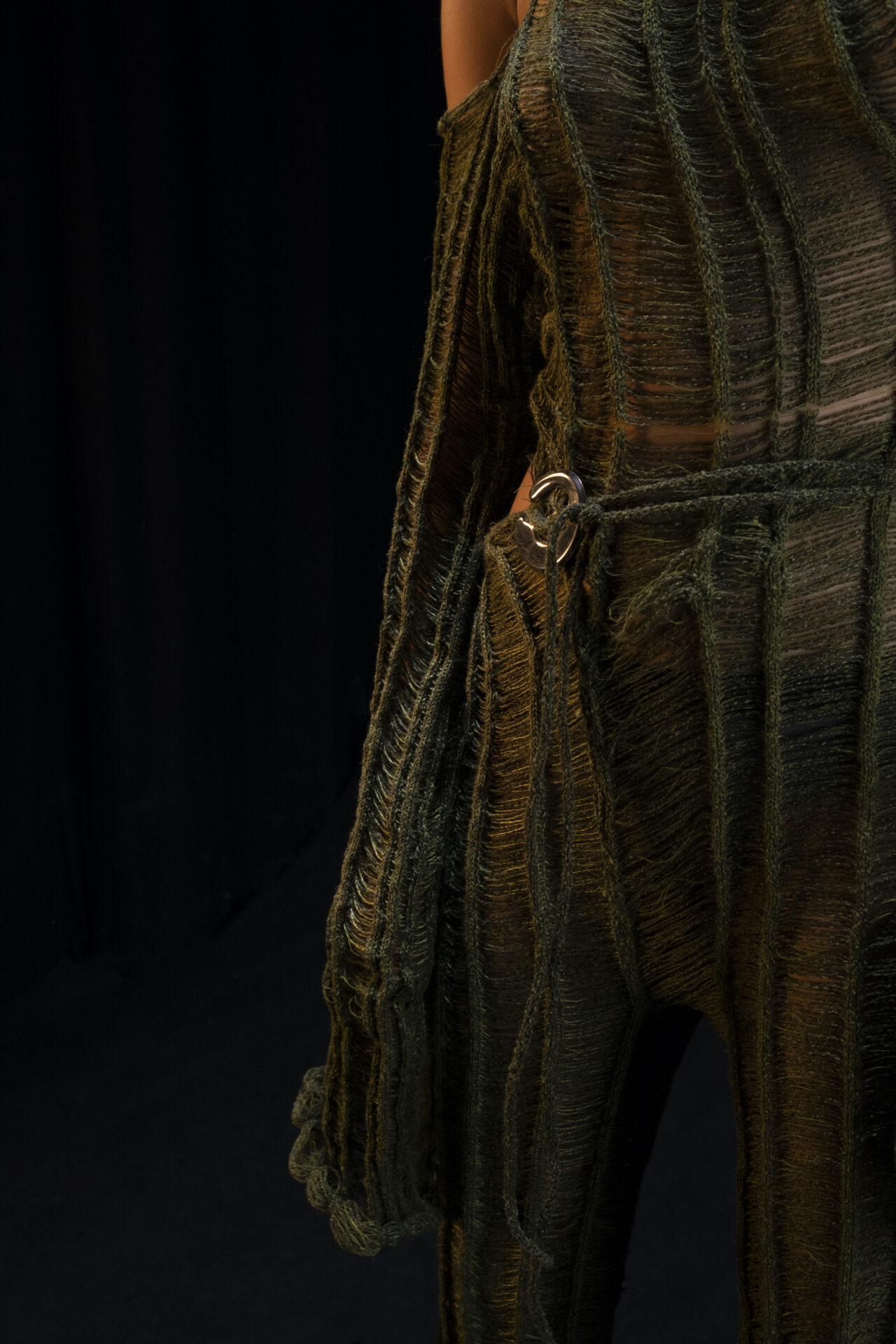
ABOUT THE OmniChi COLLECTION / Being given the umbrella theme Magic for this project, I continued my research and linked it to the phenomenon of shapeshifting. What fascinated me was its history, which has connections to the oldest types of totemism and shamanism, medieval folklore as well as the oldest existing literature and epic poems such as the Iliad. However, the phenomenon still occurs in contemporary modern fictional contexts such as literature and film. I’m finding inspiration in various movies such as the American series Grimm and in the Marvel cinematic universe films as well as contemporary artists such as Dan Lam and Shia Langen.
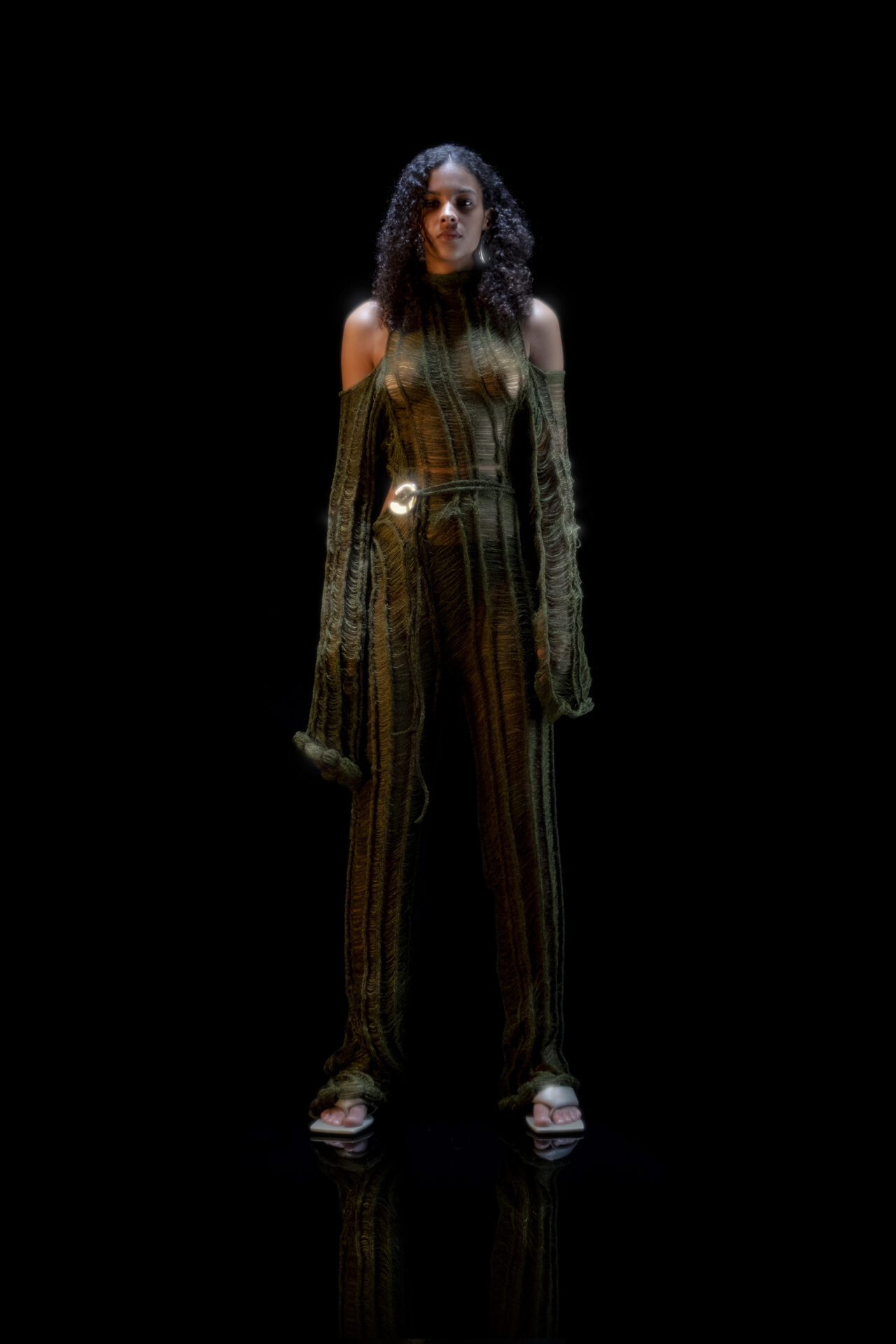
In my research, I was drawn to a combination of something natural, real and familiar and something more illusory, futuristic – like science fiction. I focused on three different sequences of events simply explained as a fluid, a dynamic and a static. I wanted to see if I could build a collection based around those few seconds in a transformation where something goes from one thing to something unrecognizable. The purpose of the collection is to illustrate that the female body has been dressed in such a way that controls some form of change of position – that the body remains in different ways but the garments give the appearance of something new, that something has changed.
I describe the collection as the ability to physically change appearance; melt down, reconstruct and transform oneself. The moments where transformation occurs and the persona liquifies into something unfamiliar to then take form as something new; a characteristic reincarnation.
With materials and material developing being the main focus in my debut collection, OmniChi, I found myself mixing a lot of my previous experience and was heavily influenced by art and performance art. I developed a deeper understanding for knitting, which is something I want to learn more about, as well as a more experimental and almost chemical exploration of textiles by working with silicone and its abilities.
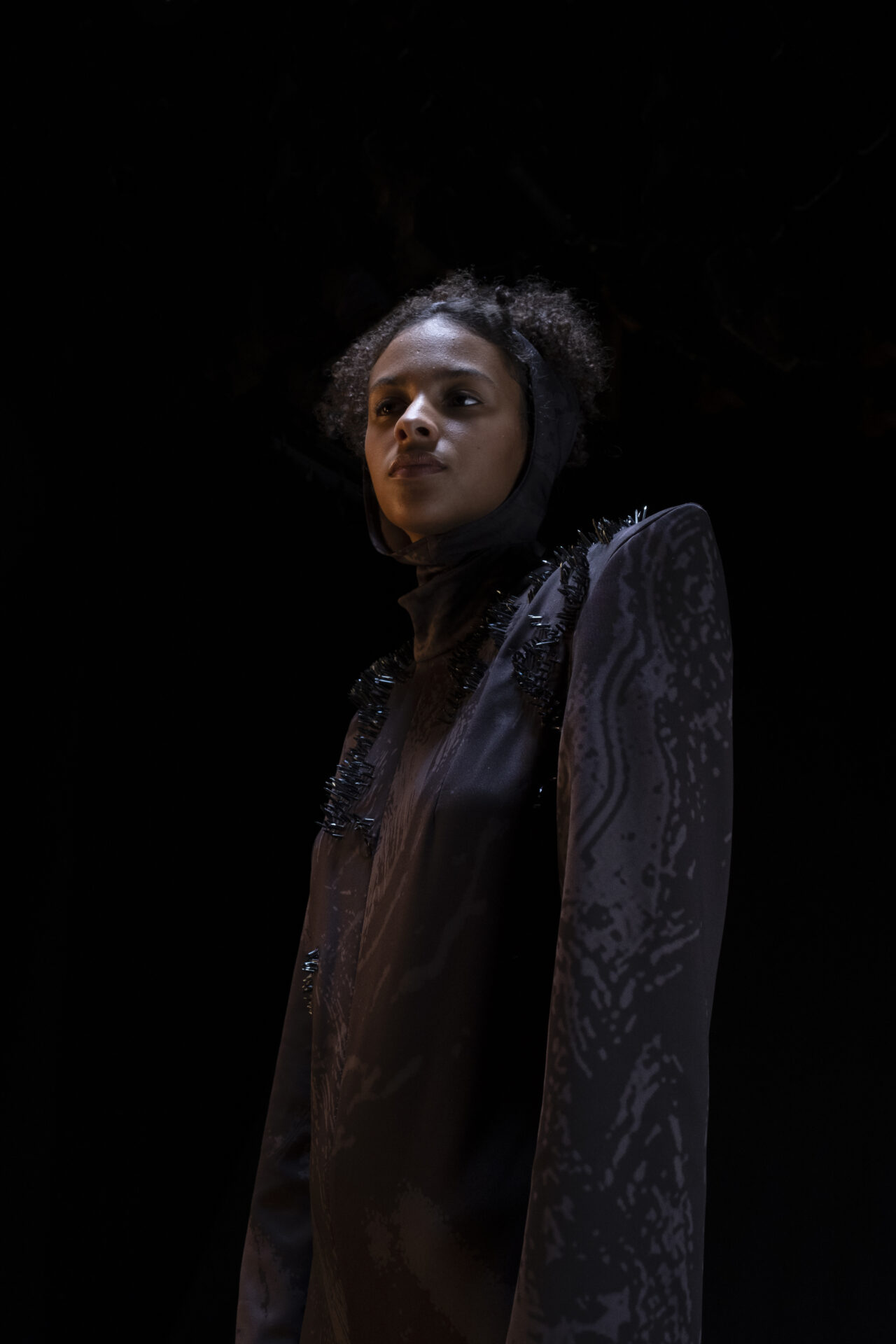
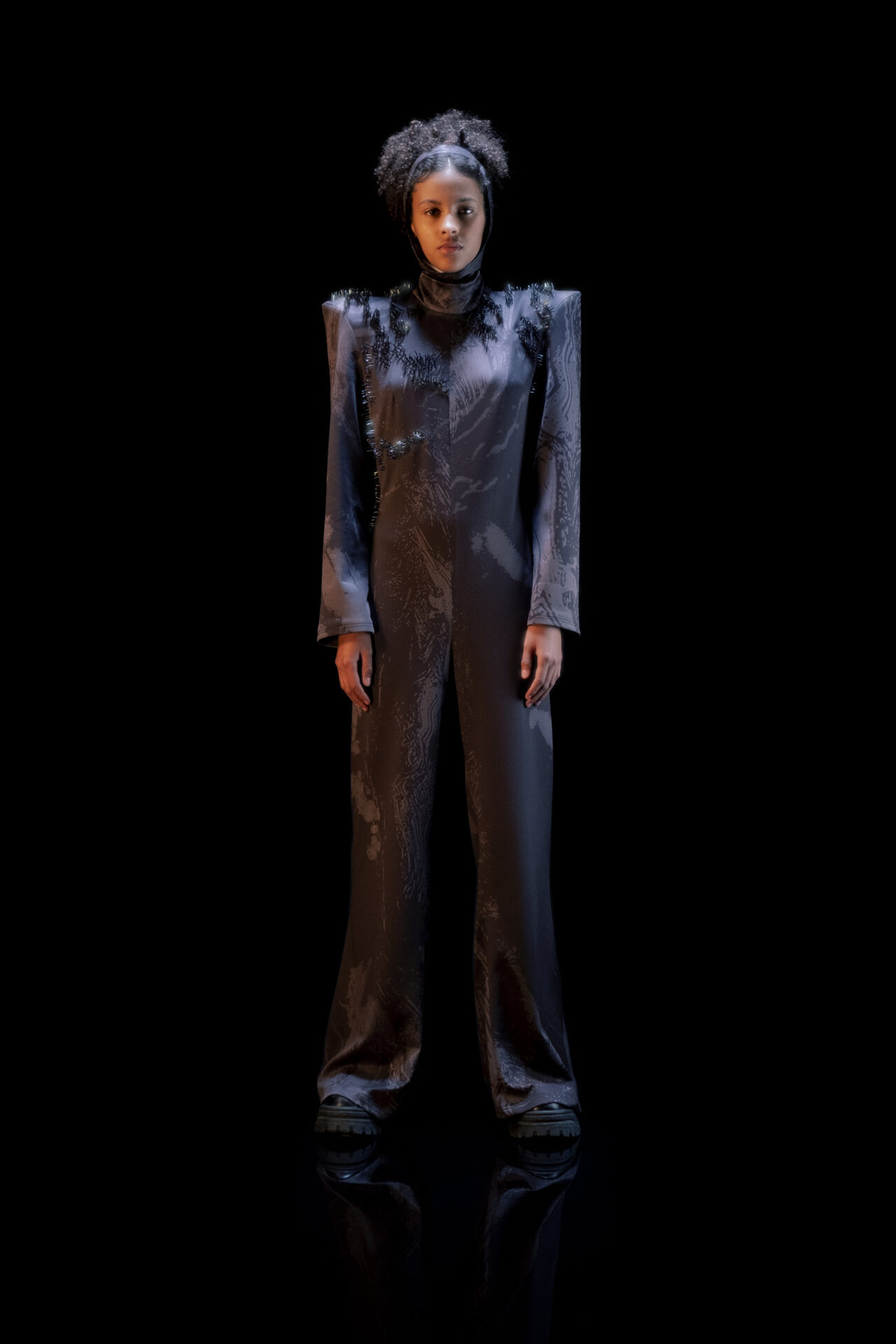
The collection uses knitting in a technique called floats, essentially dropping the loops while knitting on a domestic knit machine. The material is a mixture of wool, linen and cotton, intertwined in my own mixture to create the colour and texture in the garment. I have created a dress completely made out of silicone. This one was an experience to say the least. Giving myself the challenge to create a garment without sewing was fun and exciting but also challenging, with a lot of trials and errors.


The base of the dress is silicone manipulated with water, creating separations in its surface. The detailing pearls are also made of silicone and the patches grading in colour from green to black are made with a technique called flock or flocking.
For my printed look, I created a pattern inspired by different nature elements such as water and the ridges in wood. Wanting to accentuate the pattern more, I found using spikes as an adornment to work the best. Combining the two as well as the padding in the shoulders, I could create a garment representing a more static and hard expression, fitting well into the vision of this collection.
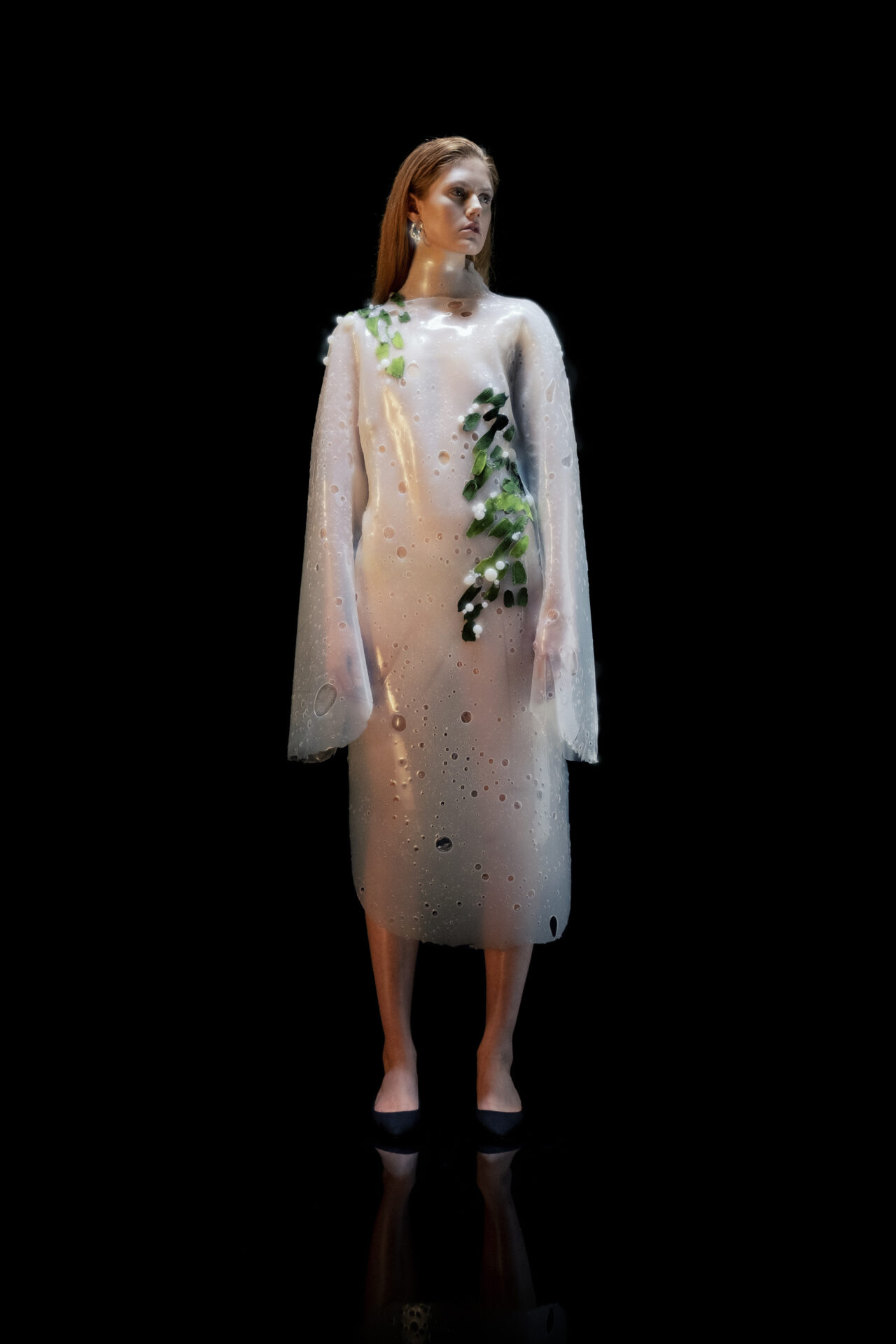
BIO / MAYA SUNDHOLM @sundholmmaya is a twenty-one year old Stockholm-based fashion designer who is currently studying BA Fashion Design at Beckmans College of Design.
In her design, she focuses mainly on experimentation, sustainability and material manipulation. As a designer, she’s captivated by nature’s many qualities; structure, motion and lines as well as the form and motion of the body and bodily relationships towards garments.
Maya often finds the materials the most interesting about her work and is fascinated by the tacit knowledge held within materials that allow textiles to become a blank canvas for untold stories and alternative narratives.
CREDITS
Art Direction / Alva Nylander, Alexander Peri, Eric Rösmark, Hedvig Moberg, Joel Eriksson, Linnea Jacobson, Tuva Larsson
Retouch / Linnea Jacobson
Render / Hedvig Moberg
Photography / Valtýr Daregard
Models / Alice Vondeling, Select models stockholm Felicia Kerje, MIKAS stockholm
HMU / Anna-Lena Svensson , Julia Ax, Amela Raghe
VIDEO CREDITS
Art Direction / Alva Nylander, Alexander Peri, Eric Rösmark, Hedvig Moberg, Joel Eriksson, Linnea Jacobson, Tuva Larsson
Cinematography / Stellan Runge
Models / Aline Bennour, Icons Agency , Alexandra Wallner, Icons Agency Eunice Owolabi, Fiiri Agency
HMU / The makeup institute Stockholm
Uwera Honorine
Zoey Maleficent
Cynthia Cidrao
Anissa Guedra
